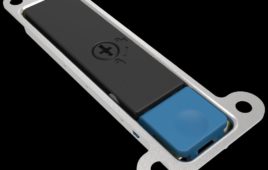T-Mobile on Monday revealed its first 600 MHz handset will be here for the holidays, setting the stage for rollouts of the new spectrum before the end of the year.
According to CTO Neville Ray, the first 600-MHz compatible device will come courtesy of Samsung and will be released in time for what is usually a blockbuster holiday quarter for the Un-carrier. Other handset manufacturers are also making plans to release 600 MHz devices, he said, but didn’t give out any names.
The release of handsets further sets the stage for T-Mobile’s initial deployments of its new low-band spectrum, which are expected to begin sometime this year. Ray indicated T-Mobile currently has low-band spectrum holdings that cover 272 million POPs, and noted the target areas for the first 600 MHz rollouts will be in areas where the Un-carrier hasn’t successfully launched low-band airwaves to date.
And just like the Un-carrier’s other airwaves, the 600 MHz spectrum will play host to a number of new technologies to maximize efficiency and capacity. Ray revealed the first to roll out on 600 MHz will be low- to mid-band carrier aggregation. Moving into 2018, the Un-carrier will also look at aggregating two low bands, he said.
“(That’s) not as easy as low to mid, but all of those combinations will be working through standardization as we move into the latter part of ’17 and early ‘18,” he commented during Monday’s first quarter earnings call.
LTE-U and LAA will also play on the new airwaves, though the timeline for that on 600 MHz will come a bit later. Ray said T-Mobile has already lit up LTE-U on its current airwaves in “a few locations” across the country and will be turning up the feature in more places throughout 2017. Testing and trials of unlicensed technology are still ongoing, he said, but noted both LTE-U and License Assisted Access (LAA) will be a “big deal” in terms of boosting the capacity and capability of wireless networks in 2018 and 2019.
Ray confirmed that T-Mobile’s accelerated 600 MHz launch schedule is made possible by extensive work the Un-carrier has been doing – not only on the wireless side with radio and handset vendors, but also on the broadcaster end of things. Readers will remember T-Mobile inked a deal with broadcast equipment company Electronics Research Inc. (ERI) this time last year to boost materials and accelerate broadcast antenna production.
In addition to making production investments for antennas and equipment, Ray said T-Mobile has also done some logistical legwork for getting crews to do the actual antenna replacement and repacking work.
“We started work last year with suppliers in the broadcast space too to help kind of kick start the logistical challenges they would face in terms of repacking and relocation,” Ray said. “We’ve been kind of fueling another ecosystem in the broadcast industry as well as our own in the wireless space. We absolutely believe that what we’ve done there will enable many of these broadcasters – and there are many of these broadcasters that want to move quickly. We will help facilitate their progress to repack and relocate much faster than they could have without us. So that work is ongoing.”
Filed Under: Telecommunications (spectrums)




